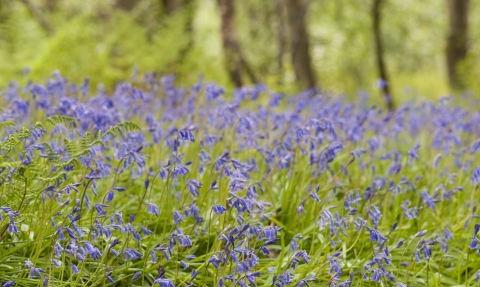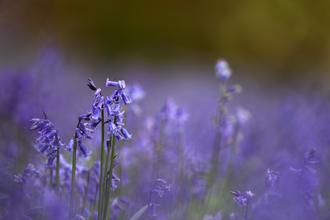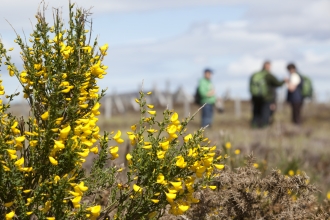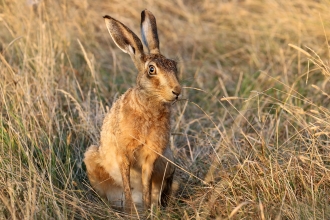
Katrina Martin / 2020VISION
Bluebells
Bluebell Woods
Over the space of a few weeks in spring, from mid-April onwards, bluebells set our woodlands ablaze with their bright blue flowers. The UK is home to more than half the world’s population of bluebells, making it our unofficial national flower. Their presence is a sure sign you are in a very old woodland.
What are they?
Bluebells are the stars of the show in springtime woodlands but there's lots more to see and hear too. Listen out for woodland birds singing from the branches. Many bluebells woods will be home to birds that have migrated thousands of miles to the UK to breed like the blackcap, wood warbler, nightingale and chiffchaff. On the ground look for other woodland wildflowers among the bluebells like the delicate white stars of stitchwort and the unmissable pink spikes of early purple orchids. Remember it’s not just about the colour. The flowers have a distinctive if subtle sweet scent: get down amongst the nodding flower heads and take a deep sniff too!
Where can I see them?
Aughton Woods
Spring is one of the best times to visit Aughton Wood, near Lancaster, when the bluebells form a carpet across the woodland floor.
Brockholes Nature Reserve
At Brockholes, near Preston, spectacular blue carpets spring up in Boilton Wood and practically glow between the trees! It’s one of our favourite sights, and spring is the perfect time to head over to the reserve and photograph them in all their glory.
Warton Crag
Warton Crag near Lancaster is a fascinating mosaic of habitats, but in Potts Wood and Strickland Wood the ground flora includes wood anemone, bluebells and primroses, early-purple orchids, violets and pignut; the overhead canopy of trees are typical of moist, calcareous soils, with ash and hazel, alongside yew, birch and rowan.
Moor Piece
High up in the East Lancashire moors is this hidden gem of a nature reserve. The woodland areas of Moor Piece make it a perfect catchment area for bluebells during the spring time.
Whilst Lancashire Wildlife Trust members are able to apply for a permit to visit Moor Piece, this special place is an untouched haven for wildlife that thrives on undisturbed solitude. This unspoilt nature allows wildlife such as woodland butterflies and early bumblebees to thrive under the carpet of bluebells which provide them with a vital early nectar source.
More information
There are rare white ‘albino’ bluebells which lack the blue pigment.
In folklore, bluebells are called ‘fairy flowers’ and are said to summon fairies to woodland gatherings.
Common bluebells are a protected species in the UK. Picking the flowers and digging up the bulbs carries a heavy fine.





